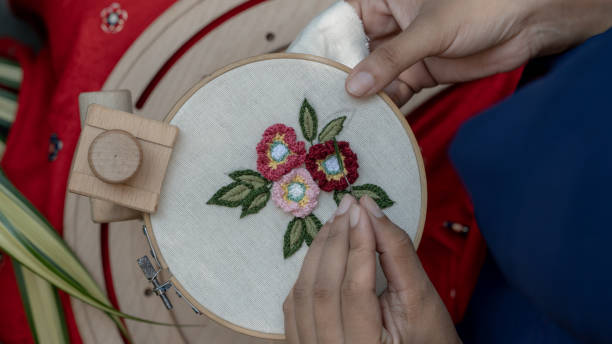
Craft practices are seen as a way to counter the stress and pressure of modern life. They can be paired with other activities like coloring books for adults and cooking from scratch.
Knitting, crocheting, weaving, ceramics, and needlework are all repetitive crafts that require a high level of skill. According to the famous psychologist Mihaly Csikszentmihalyi, this allows us to enter a “flow” state. This is a perfect immersion state of balance between challenge and skill.
Crafts are popular because they have mental and physical benefits.
Craft as therapy
Since the beginning of the 20th century, arts and crafts activities have been an integral part of occupational therapy. This field was created in response to the demands of returning soldiers at the end of World War I. Many of these people suffer from post-traumatic disorder (now called “shell shock”), which was a distinct health field at the end of World War I.
The repatriation assistance offered to returning veterans from the two World Wars was often based on knitting, basket weaving, and other crafts. It was both divertional therapy, which took the mind off of pain and negative thoughts, as well as skill development that was geared toward reentering civilian employment.
More recently, research is seeking to understand better just how craft is so beneficial for the body and mind. Interestingly, much of the focus has been on the mental health and wellbeing brought about by knitting.
Science reveals the benefits of crafts.
A large-scale international survey of knitters revealed that respondents perceived a variety of psychological benefits: relaxation, relief from stress, a sense of accomplishment, connection to tradition, increased happiness, reduced anxiety, enhanced confidence, and cognitive abilities.
In clinical contexts, introducing knitting to the lives of hospitalized anorexia patients led to a reduction in anxiety preoccupations with eating disorder feelings and thoughts.
74% of participants in the research described feeling “distracted or “distanced,” as well as more comfortable and relaxed. Over half of the participants said that they felt less stressed, accomplished, and less likely to act on “ruminating” thoughts.
Another study found that knitting reduced the stress experienced by oncology nursing staff.
Participants feel the benefits of quilting as they age. Research reports Quilters find their work challenging and cognitively demanding. It helps them maintain or develop new skills. Working with color is uplifting in winter, too.
Textile crafts have been found to improve the self-esteem of sufferers of Chronic Fatigue Syndrome (CFS/ME), Depression, and Other Long-Term Health Problems. They also increase their sense of well-being and ability to cope with their condition.
While the movement encourages men to work together in a collective shed, they have also found that the benefits of woodworking and other creative tinkering are similar for both genders. Participants reported decreased levels of depression.
Craft makes us feel good.
Crafts, such as needlework, knitting, and quilting, may seem to be a relatively private activity, but the benefits are also derived from the social interactions that craft facilitates.
They have been reported in whole communities affected by disasters, like the recovery after the 2011 Christchurch Earthquake.
Craft practice is a great way to improve well-being. It can be done alone or in a group, but it’s entirely up to you.
Craft practice is highly valued by those who are shy, ill, or suffer from social anxiety. This control and the ability to divert unwanted attention away from themselves and channel it into the making process is an important aspect of their craft.
Craft remains a qualitative research subject based largely on self-reporting. It focuses on its ability to produce positive health outcomes by promoting positive mental health. There is still much to be done, but it’s evident that craft plays a major role in improving the quality of life for those who practice its practices.
